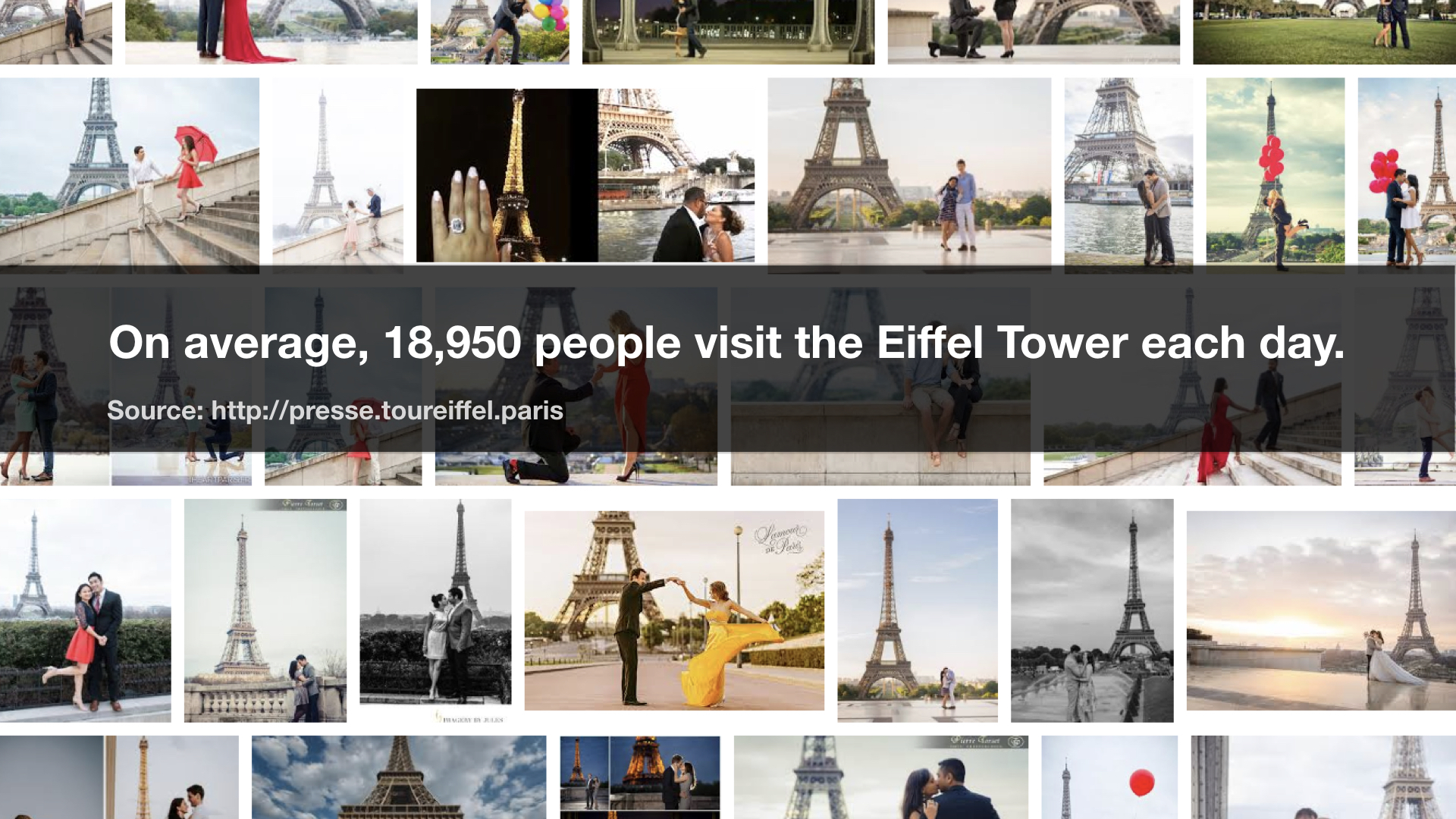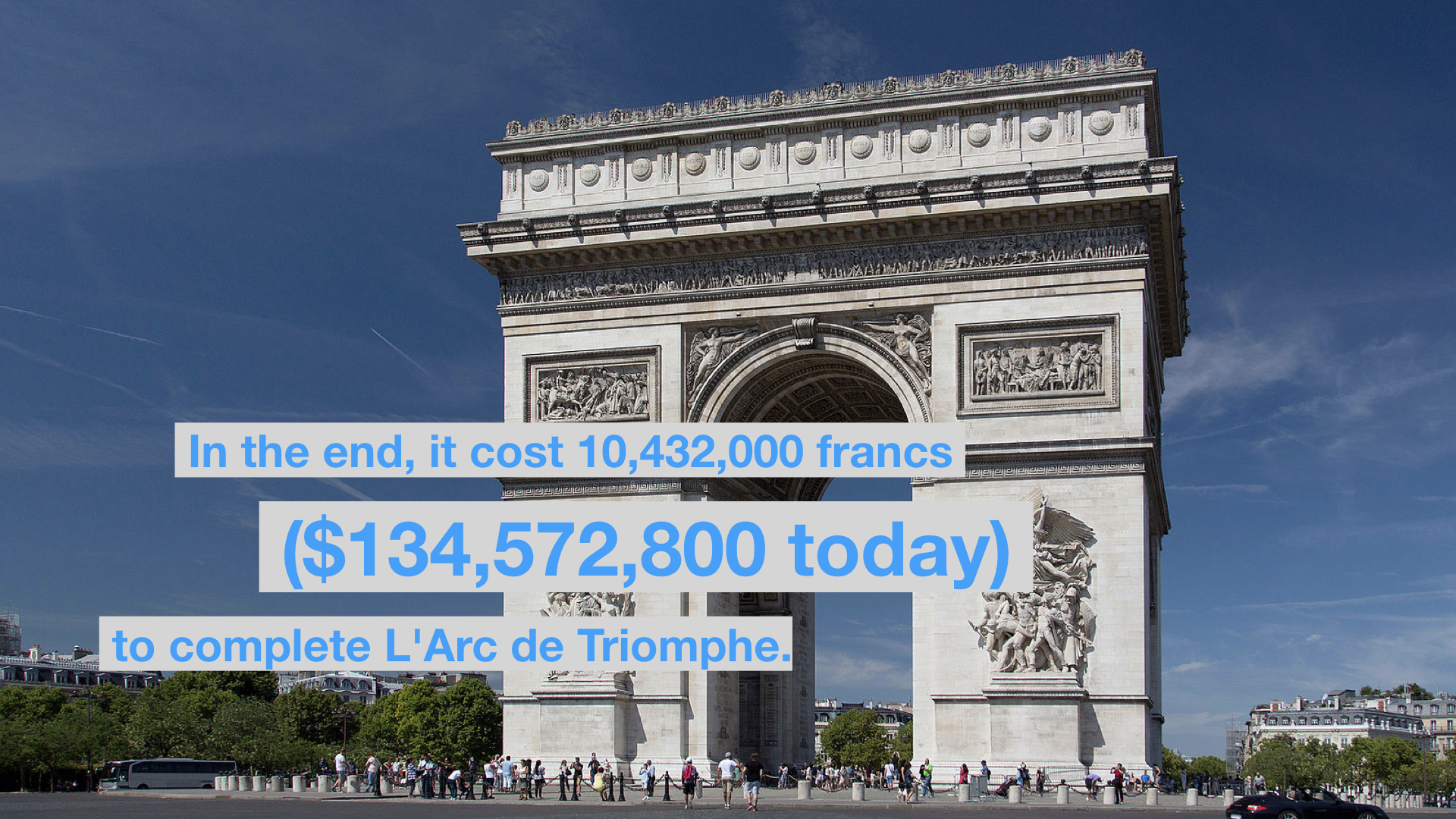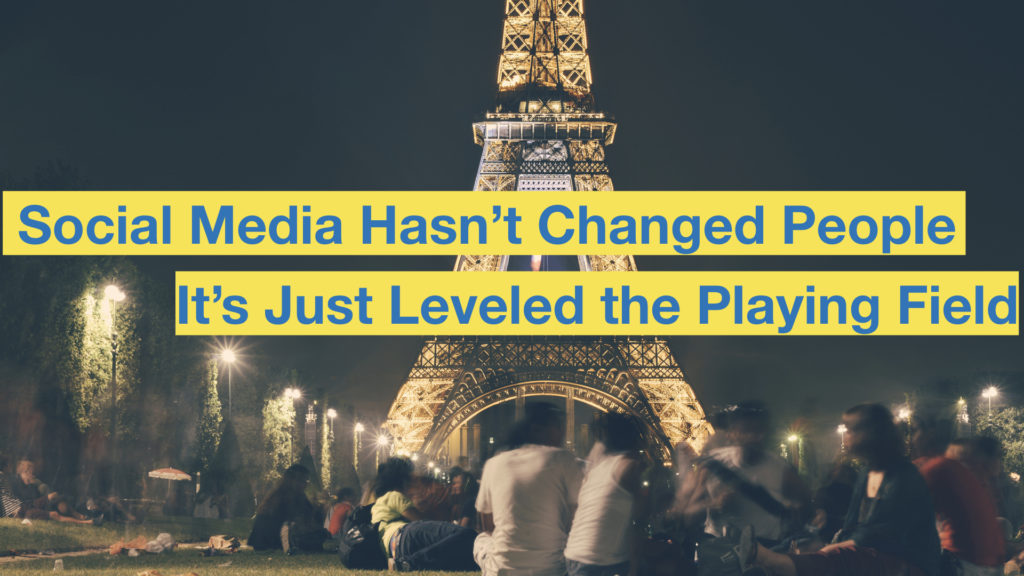On average, 18,950 people visit the Eiffel Tower each day.[note]Number of Visit to the Eiffel Tower Remains High in 2015 | http://presse.toureiffel.paris/number-of-visits-to-the-eiffel-tower-remains-high-in-2015/[/note] But at 7:30 on a Thursday morning, you can beat most of them and get an unobstructed look at the monument from Place du Trocadéro, free of the throngs of selfie sticks and peddlers pushing tchotchkes.
Instead, you’ll find yourself sharing the views with half a dozen couples, with their professional photographer in tow (you assume professional because of the Canon 70D DSLR in their hands). The trio is taking engagement photos, all looking for a similar shot with the Eiffel Tower in the backdrop.
It looks something like this:

The permutation changes from couple to couple, but the composition remains largely the same. It spells romance and love and new beginnings.
You watch the photographer chimp the camera. Rush over to move a lock of hair from the woman’s eyes. Instruct the man to to take his phone out of his front pocket. She walks the couple through a series of choreographed poses.
And if you can reserve judging the inherent vanity of commemorating the intention to marry (i.e., “engagement photos”) you’ll realize you’re living through the greatest time in the world.
The first share button
Cynics could watch the scene unfold and whine about how millennials experience life solely through social media. The same cynics would say people today are more concerned with having the Eiffel Tower in their Instagram feed than visiting the Eiffel Tower.
But what’s the difference between posting your engagement photos on Instagram and what Sarah Mullett and John Grant did in a paper called The New-York Daily Times on September 18, 1851?

The daughter of a future Supreme Court justice and cousin of general and president Ulysses S. Grant were the first to announce their nuptials for the world to see.[note] They Were the First by Lois Smith Bradley | January 23, 2017 – https://goo.gl/SkG1s2[/note]
The announcement launched a 150-year tradition of wedding announcements in newspapers.
That particular paper became the institution we know as The New York Times.

Today, the only difference between wedding announcements in The New York Times and sharing on Instagram is the gatekeeper — or the lackthereof.
To share your photos in The New York Times, you need to tell them where you live, what your parents do, and your educational level[note]How to Submit a Wedding Announcement | http://www.nytimes.com/ref/fashion/weddings/howtosubmitwedding.html[/note] so that a lone editor could decide whether you were worthy of their hallowed pages of recycled paper.
Today, with decent lighting and the right filter, anyone can publish their edition of the Style section. The couple gets photographs they love, that they can upload to Facebook or Instagram or Snap and share with the world. The photographer works directly with her customer and gets paid.
The takeaway:
Social media didn’t create the desire to commemorate life’s moments. The desire has always been there — social media just democratized the ability to do so.
#humblebrag
For an extreme example, you only need to look 2 kilometers north of the Eiffel Tower, where L’Arc de Triomphe stands at the center of Place Charles de Gaulle.

Emperor Napoleon commissioned the 164 ft high, 148 wide arc after his victory at Austerlitz in 1806. Winning wasn’t enough. He wanted — needed — to tell the world what he did. His version of hitting the share button? Levying taxes against the people in his empire so he could build L’Arc, for the sole purpose of walking through it on his return to Paris.
In the end, it cost 10,432,000 francs (equivalent to $134,572,800 today)[note]\_anna/l’arc.html[/note] to complete the project.
Social media hasn’t changed people. We’re exactly the same as we’ve always been.
Social media just leveled the playing field.
###
